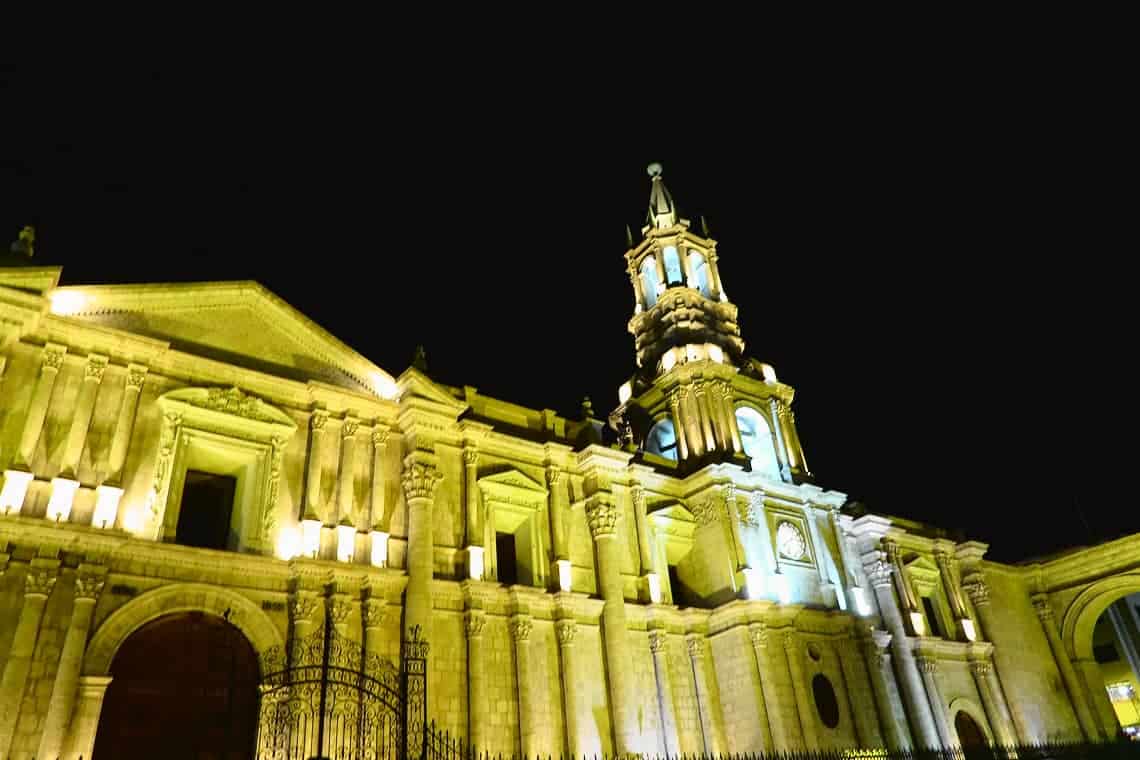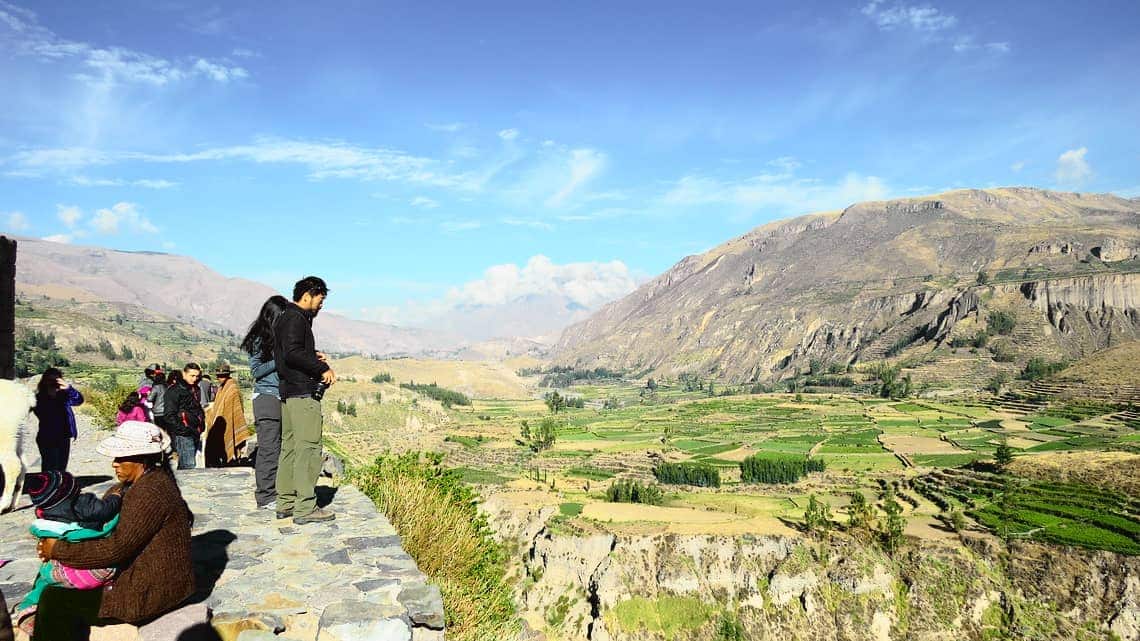Arequipa
The city where the volcanoes rest
Arequipa City
Arequipa Usefulinfo
Language: Spanish
Temperature:
Time Zone: GMT -5
Religion: Predominantly Roman Catholic 92.5%
Emergency #: 011 / 5114 Driving side: Drive on the right
Altitud: 2,380 msnm.
Temporada : Apri-Set
Arequipa City lies in the so-called South Tour Corridor of Peru, which includes the cities of Nazca, Arequipa, Puno, Cusco, as well as the Inca Trail. It’s also called “the city where the volcanoes rest” because it’s surrounded by three impressive volcanoes: Misti, Chachani, and PichuPichu. Volcanoes are visible from almost every place from the city. Unlike the other cities in the corridor, Arequipa is a well-conserved sample of the Spaniard and “mestizo” culture, but not native Indian culture, providing an important cultural landmark for those who visit it.
The mix of natural attractions (volcanoes, rural path, hot spring fountains) and historical well-preserved monuments and houses is the seal of this 470-year-old city. Its people, well known as strong characters and hard workers all over the country, are also something difficult to forget to the visitor. They are called “Characatos” and the name refers a culture in result of the mix of Spaniards (founders of the city) and skilled locals who developed a unique way to survive and live in this beautiful territory.
This led Arequipa City to develop a large mestizo population as its demographics changed and grew over the centuries. Since the late 1940s, however, there has been a huge and increasing immigration from the Peruvian sierra, thus changing the demographic and cultural character of the city.
Arequipa Attractions
Cathedral of Arequipa
The Historic centre of Arequipa City, keeps most of the important buildings from the Spaniard era. They are all built in volcanic sillar rock, and the whole complex represents an integration of European and native building techniques and characteristics, expressed in the admirable work of colonial masters and Criollo and Indian masons. This combination of influences is illustrated by the city’s robust walls, archways and vaults, courtyards and open spaces, and the intricate Baroque decoration of its facades.
There are several walking routes available to enjoy the centre. Most of them start in the Plaza (main square) and cover five or six blocks. Most maps include the important buildings along the centre streets. The newly created pedestrian mall at Mercaderes Street, historic Arequipa’s main shopping street, is another important walking route. Lining Mercaderes Street are buildings of numerous architectural styles, ranging from traditional colonial, art deco, to contemporary.
Some other well-preserved touristic areas within the historic core are the pedestrian-friendly San Lazaro neighborhood (east from the Main Square) and the Yanahuara district, located north and connected to the centre by two historic stone bridges.

Santa Catalina Monastery
Santa Catalina Monastery was founded on the October 2, 1580, and has an extension of 20,000 square metres that was constructed in the second half of the 16th century. The Convent, where there are still nuns living in cloisters, is a small walled city with narrow streets, passages, staircases, and small squares.
The Convent remained closed to the public until 1970. The Convent has now recovered its original colorful view: the walls from the city were not only white, as most people believed. Ochre, indigo, and orange illuminate the austere architectural style.

Colca Canyon
Is a canyon of the Colca River in southern Peru. It is located about 100 miles (160 kilometers) northwest of Arequipa. It is more than twice as deep as the Grand Canyon in the United States 4,160 m. However, the canyon’s walls are not as vertical as those of the Grand Canyon. Since they are such major features of the landscape. The Colca Valley is a colorful Andean valley with towns founded in Spanish Colonial times and formerly inhabited by the Collaguas and the Cabanas. The local people still maintain ancestral traditions and continue to cultivate the pre-Inca stepped terraces.

